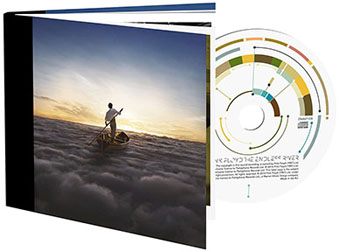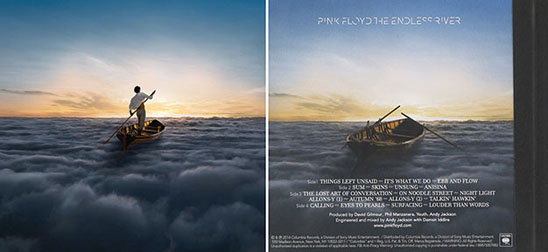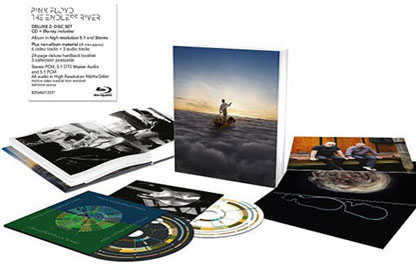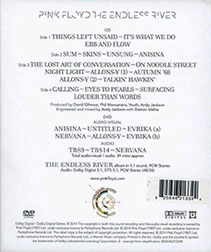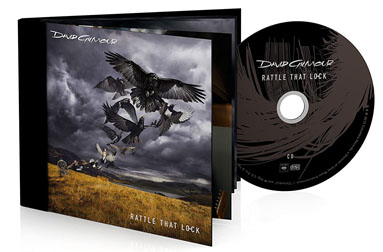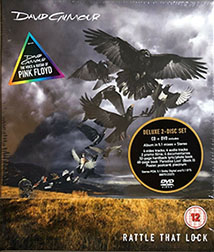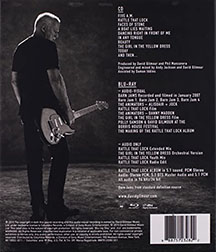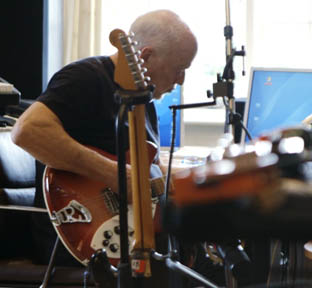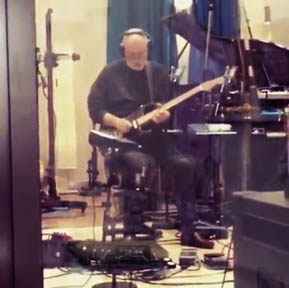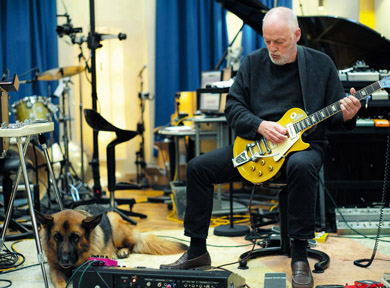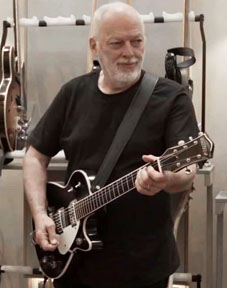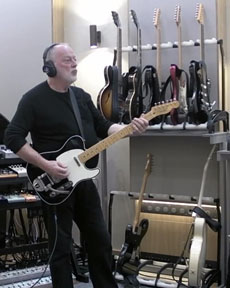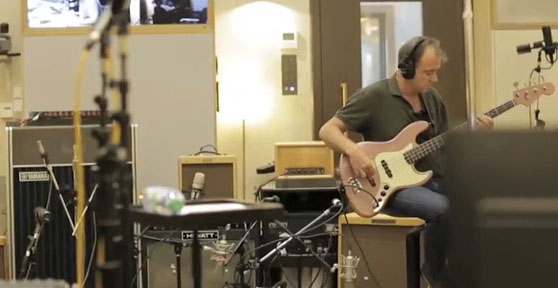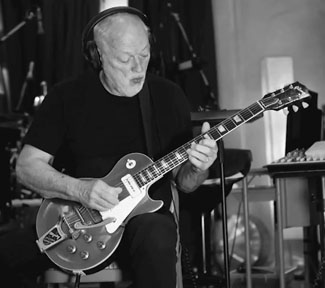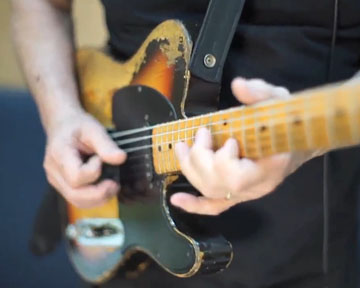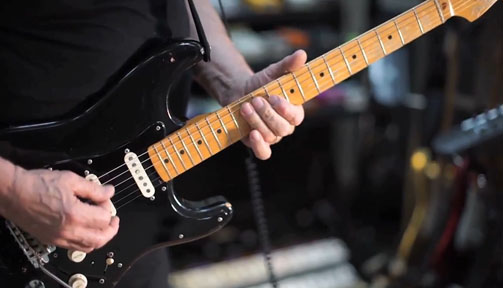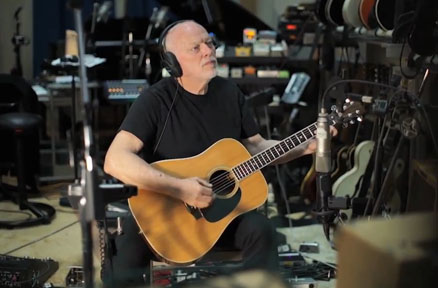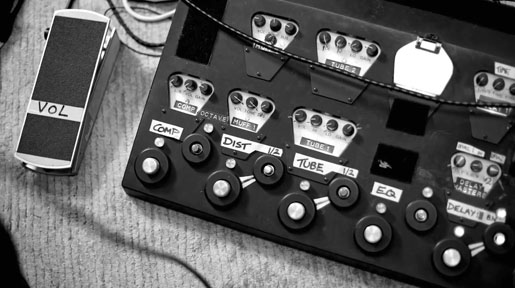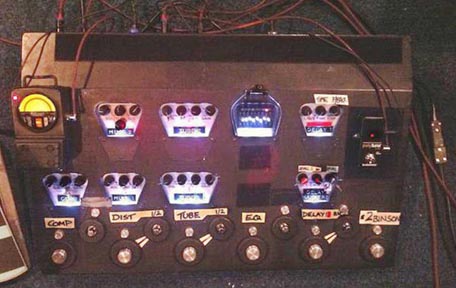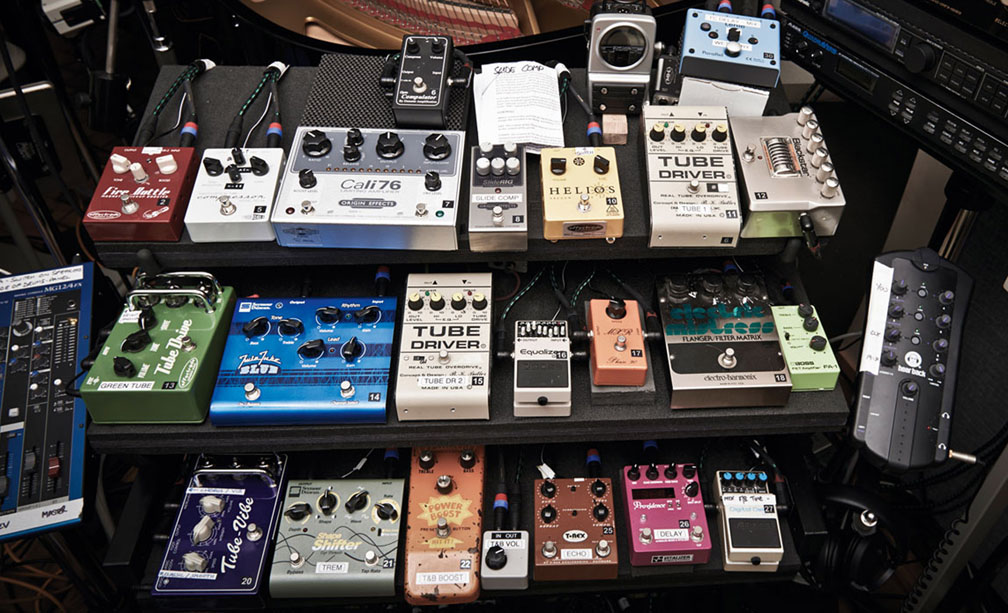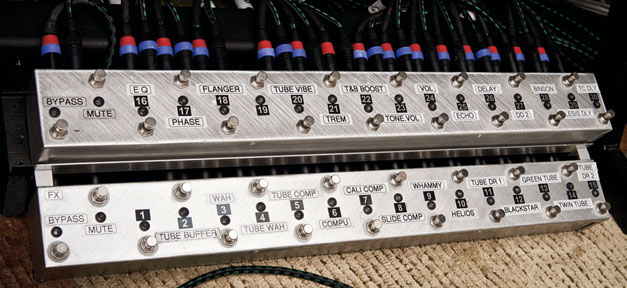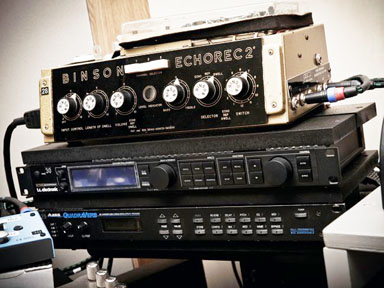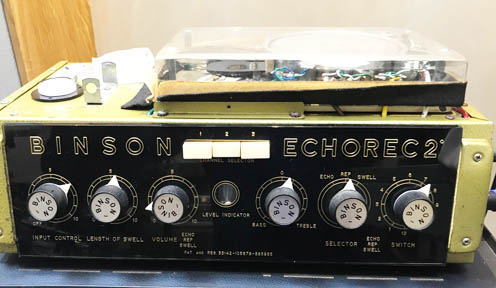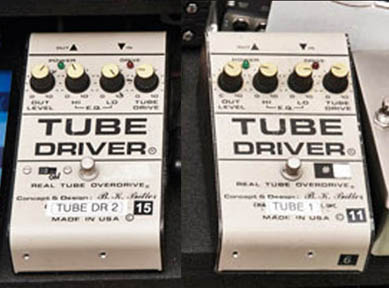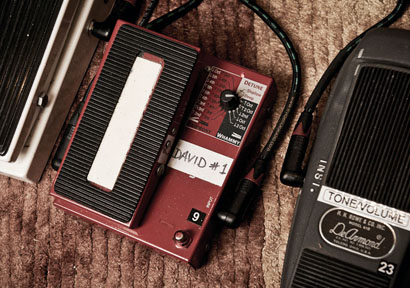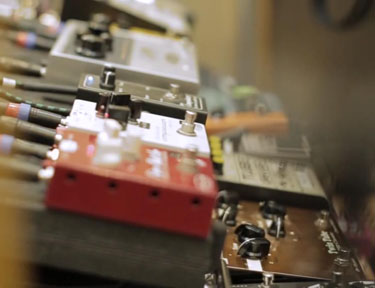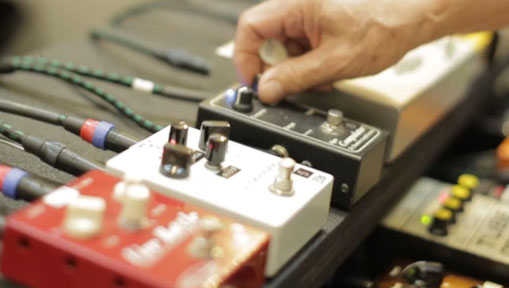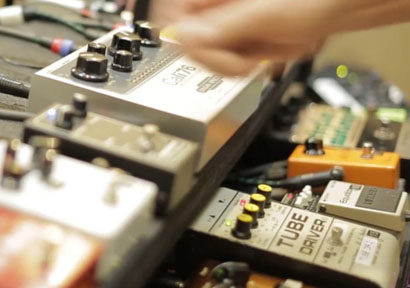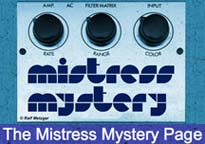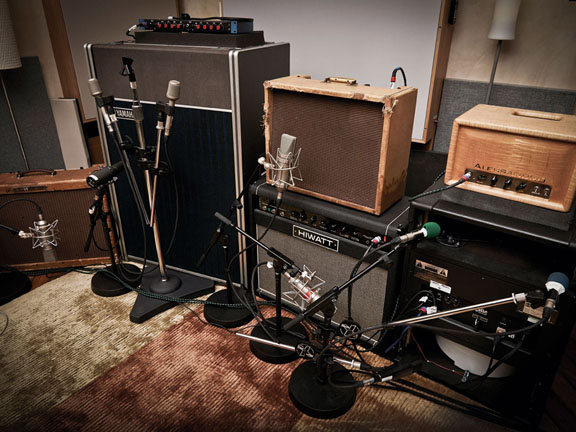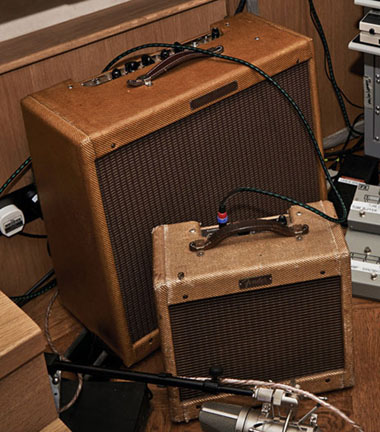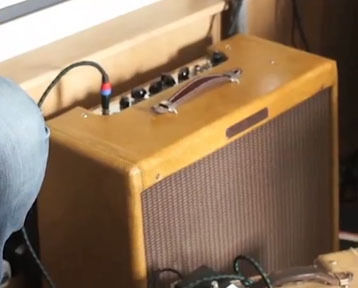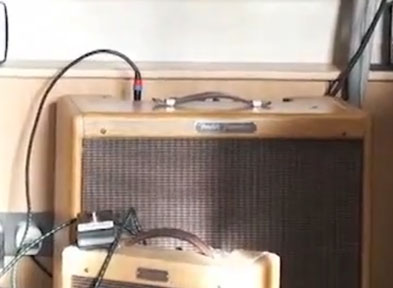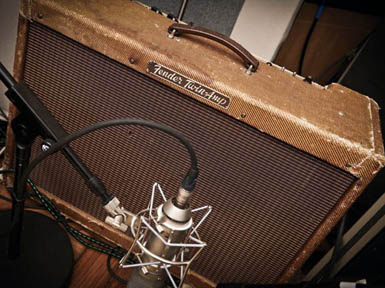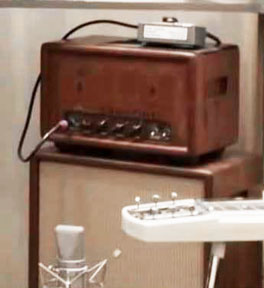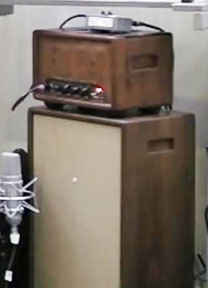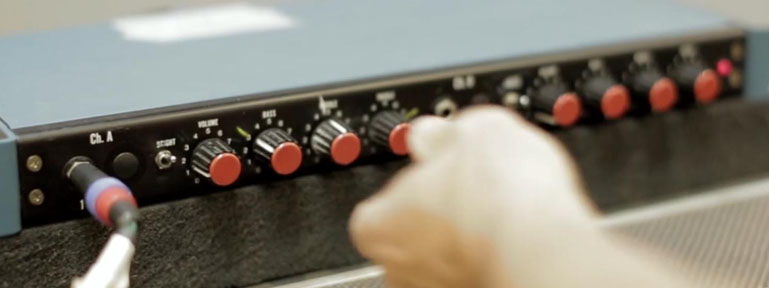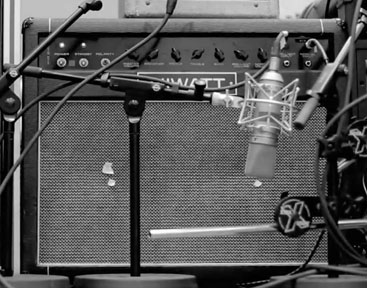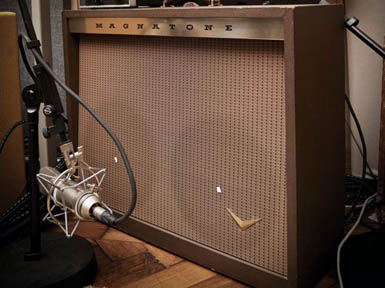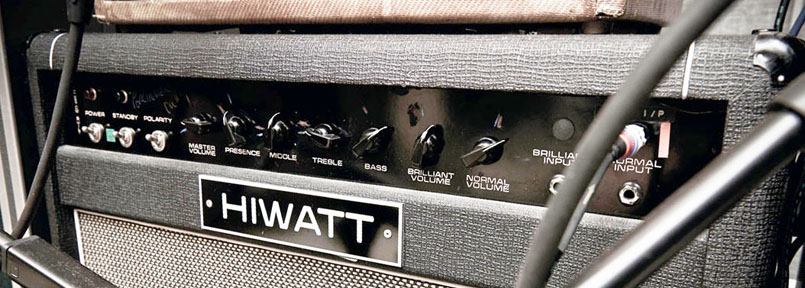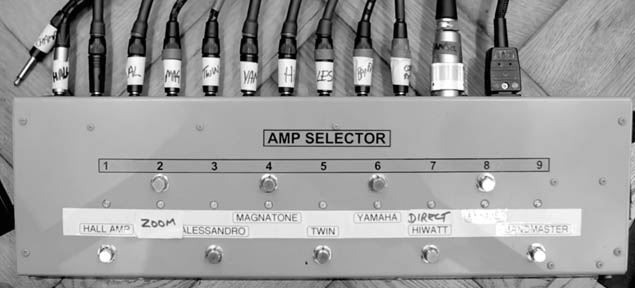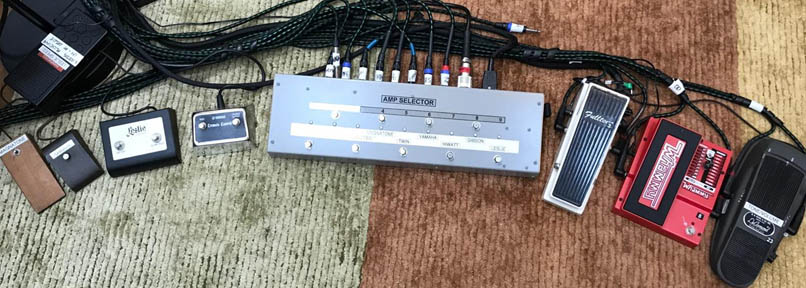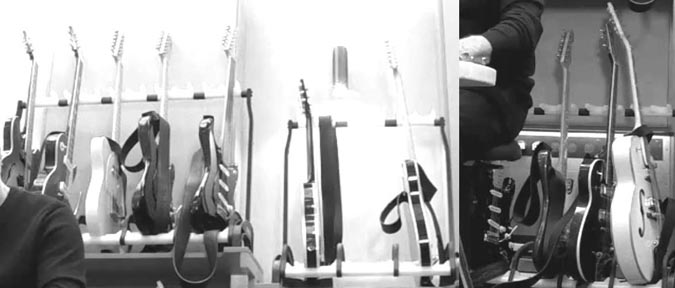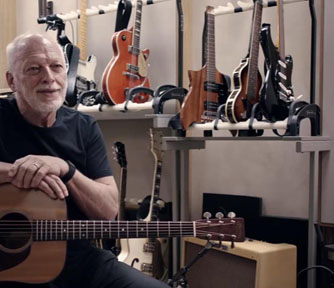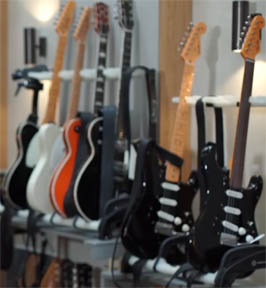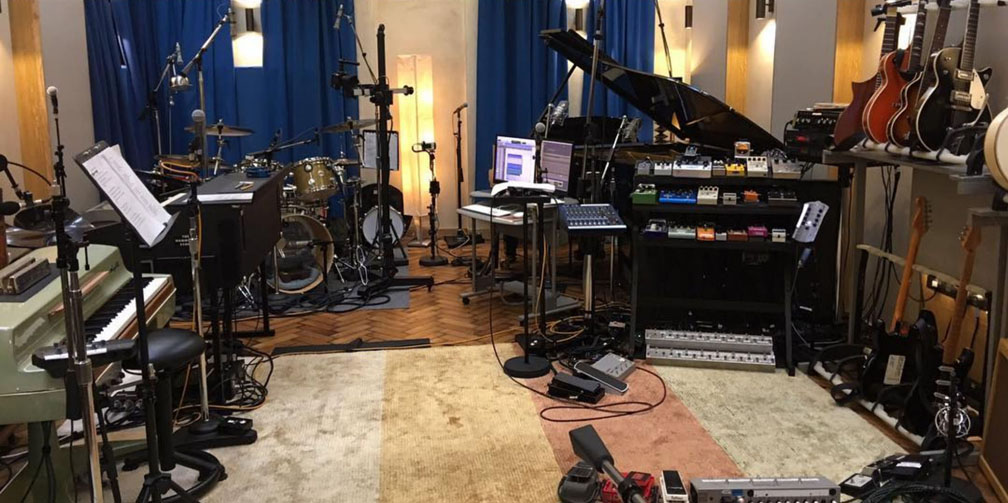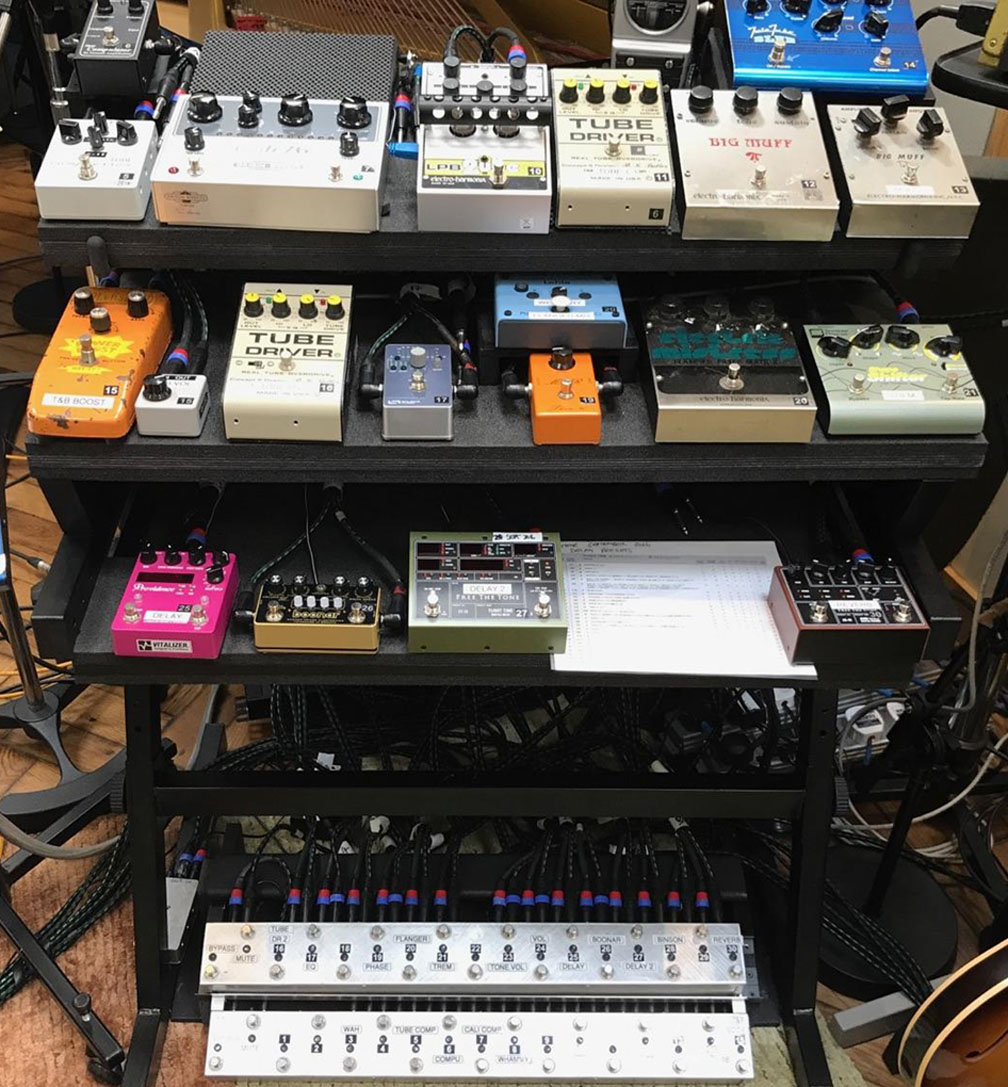NOTE: This website is frequently updated. Last update July 2021
For my setups and sound clips CLICK HERE
THE ENDLESS RIVER, RATTLE THAT LOCK AND THE MEDINA RECORDING STUDIO - In November 2014 The Endless River was released, Pink Floyd's final album, and in september 2015 David released his fourth solo album Rattle That Lock. Much of Rattle That Lock was recorded in Medina, David's new recording studio located near his home in Hove, Brighton. Additional recording was also done on Astoria, his flaoting recording studio, Gallery, Pil Tayor's studio, and David's barn studio in Sussex. Recording actually started a few years before this, but David took a break in 2014 to finish recording for the final Pink Floyd album, The Endless River. Since the new recordings on both albums were done around the same time using a lot of the same gear, the tones sound similar. For that reason I combined both albums into this section.
I would have finished this album earlier, but I took a long break from it to record The Endless River. Once that was finished, it took me a few months to complete Rattle That Lock. - David Gilmour, Guitar Aficionado, November 2015
Most of Rattle That Lock was releatively newly recorded, although some parts of the recordings had been around for a long time. The Endless River was a whole different animal. It started out back in 1993 as an idea for an ambient instrumental album that was to be released as a companion to The Division Bell, but with the 1994 tour approaching, the band ran out of time to complete it. It was born out of the 1993 band jam sessions, which resulted in about 20 hours of music. An early attempt was made by Pink Floyd engineer Andy Jackson to compile and mix many of those tracks into an album, famously nicknamed The Big Spliff. It was never finished or released at the time, and the final 2014 album ended up being very different. It was an album that covered the type of music from all the different eras of Pink Floyd. So how much of The Endless River was new and how much was old?
The official press releases from the record company stated that only 40% of the album comes from the 1993 sessions. The other 60% is newly recorded, but mostly based on the '93 sessions. There were about 30 days of new recording and mixing in total. Andy Jackson said something like "there are only three significant chunks of mulit tracks from the 1993 sessions that were used". Some of that original 1993 material was recorded on 24 track tape, and some on half inch tape, but most of it was recorded on simple stereo 44khz/24bit DAT tapes (not multi-tracked). It started with the initial 1993 Britannia Row studio jams recorded on DAT. David had the DAT recorder sitting beside him in the sessions and would hit record when he heard something good happening. Andy Jackson said it was not really a proper recording setup and "not many of those rhythm tracks were used" for TER.
About 27 pieces of music from those jams were selected by the band and worked on again in '93 on the Astoria studio, recorded on DAT. There were also two days of recording rehearsals with the full band at Olympic Studios in London. I think that is where most of the pre existing "chunks" of higher quality material came from. Several of the Division Bell tracks were mixed from those same stereo DAT tape jams, including Cluster One, Marooned, and Wearing the Inside Out, among others. Only parts of certain tracks were used from those DAT sessions for TER. For example, I have a few different bootleg versions of the song that is called Allons-Y on TER, and one of those is the exact backing track recording used on TER. Some parts were shortened or moved, but the core stereo demo track is identical. They just sweetened the stereo sound a bit with some additional EQ where needed, added EMT plate reverb, and added additional instruments overdubbed on top in 2014.
I used that (Alessandro Bluetick Coonhound amp ) for the solo on ‘Louder Than Words. I also have an Alessandro Redbone Special that I use to run a Leslie cabinet, although I still prefer the sound of my Yamaha RA-200 for rotating speaker effects. My other main amps these days include a Hiwatt combo along with some tweed Fenders - David Gilmour - Guitar Afficianado October 2015
Andy Jackson said the only TER song that features the actual full band playing from the '93 Olympic sessions was Talkin Hawkin. Some of TER likely also came from the final Astoria recording sessions for the Division Bell with Bob Ezrin. They recorded demos for 15 songs, but only 11 were finished for DB. I suspect Louder Than Words was one of those 15 songs.
Based on listening to the channels in the 5.1 surround sound mix of TER, I believe the new recordings done by David were some of the slide guitar work and several guitar solos, like:
• the slide guitar on Sum
• the 1971 style screetching slide guitar on Skins
• all the Anisina guitar work and solo
• the lead and slide guitar on Allons-Y - none of that was on the original band jam demo
• a few guitar parts on Talkin Hawkin
• some electric guitar in the background of Eyes to Pearls
• rhythm guitar added to Louder Than Words, the solo fills and outro solo, but the rest sounds like it is all from the original jam track.
I believe everything else is from the original '93 recordings:
• most of the Ebow on the acoustic guitar
• the solos on It's What We Do, Unsung, Noodle Street, Talkin Hawkin, and Eyes to Pearls
• most of the clean chords and rhythm playing
A deluxe version of the TER album was released in 2014 that featured a 5.1 surround sound mix of the album, a Blu Ray/DVD disk of demos and unreleased 1993 jams, and videos of the original 1993 Olympic and Astoria recording sessions.
The Endless River CD and Deluxe CD/Blu Ray edition
A deluxe version of the RTL album was also released in 2015 that featured a 5.1 surround sound mix of the album, alternate and extended mixes of some songs, a Blu Ray/DVD disk featuring a making-of documentary, concert animation films, and Barn Jams recorded in 2007. Fortunately for us Gilmour gear aficionados, the video content on both of these releases showed most of the gear David used in the studio in great detail.
Rattle That Lock CD and Deluxe CD/Blu Ray edition
MEDINA STUDIO GEAR - Medina was a storage building that was renovated and converted to a recording studio, custom designed by Phil Taylor. It was stocked with a wide variety of guitars, amplifiers, and effect pedals to choose from for recording. It was designed so one person could go in, hit a few buttons and be ready to record without an engineer present. There is a custom control room with switching that allows David to turn on any combination of amps and mics in the live room. He can even record in the control room, which is also stocked with a tray rack full of effect pedals, a few amps, and an old Zoom 9030 multi effects processor that David has been using zince 1991.
I have used a Tube Driver with a compressor for most of my overdrive-type stuff in recent years. I have several different compressors-and my preferences always change. I haven't used a Big Muff (in studio) for 20 years now, I suppose. On some of these solos I only use a compressor with a little bit of delay. I run the compressor's output volume hotter than usual for some overdrive. - David Gilmour, Guitar World December 2015
The overdrive I tend to use is a [BK Butler] Tube Driver these days, often with a compressor feeding into it. On this one, it’s actually pretty much untreated. On a couple of tracks, I’ve just gone through with a compressor and used the output volume to be the overdrive. - David Gilmour - Guitarist - October 2015
I tried all sorts of different amps (on RTL). I’ve got an old Fender Twin that’s pretty trusty and I’ve got a Hiwatt combo that, I guess, is 50 watts. I use my Yamaha rotating speaker cabinet quite often, mixed in with the other sounds. - David Gilmour, Guitarist October 2015
I have an Alessandro Redbone Special that I use to run a Leslie cabinet, although I still prefer the sound of my Yamaha RA-200 for rotating speaker effects. - David Gilmour, Guitar Aficionado, November 2015
There is very little documented about what was actually used in the TER and RTL recording sessions other than some behind the scenes video and a few specifics David gave in interviews. David can be seen playing the Black Strat in the Medina studio on Dancing Right in Front of Me and Talkin' Hawkin'. The Rattle that Lock and Today solos were played on David's "Workmate" Esquire. The solo on of Louder Than Words was played through David's Alessandro Bluetick Coonhound amp. The rhythm part of Louder Than Words was played on David's Gretsch Duo Jet. David's custom Fender baritone tele was used on It's What We Do. David's 57 reissue Red Strat with EMG-SA pickups was also used on TER, but it is not documented which songs it was used on.
I’m using my 1955 Fender Esquire on the solos for ‘Rattle That Lock’ and ‘Today.’ I also played my black Gretsch Duo-Jet [a 1958 model with Filtertron humbuckers] and Gibson Les Paul gold top [1955] with single-coil P-90 pickups on some of the album. I’m still using two different Martin guitars for my acoustic stuff, one of which is the same D-35 guitar that I used to record ‘Wish You Were Here,’ and the other is a 1945 Martin D-18, which I’ve used a lot over the years. - David Gilmour - Guitar Afficianado October 2015
I used the Strat quite a bit. I also have a black Gretsch Duo Jet that I used quite a lot. It’s a really old one. The old ones have got a very curious sort of hi-fi sound, a lovely top end. It has got a very different sound. I don’t know what it is about it that makes it have that sound, but I’ve tried to buy a spare to take on the road and looked at other ones and newer ones, but there’s something missing. There’s something in the sound of that old one, and I haven’t got a spare for it... I don’t understand why those particular pickups on that particular guitar have got a sort of hi-fi top end. It’s unusual on an electric guitar. - David Gilmour - Guitarist - October 2015
These sessions were the last time the Black Strat and Red Strat were used for studio recording. Those, and many other guitars seen in these studio photos, were auctioned for charty in 2019.
David Gilmour recording in 2014 and 2015 in his Medina recording studio live room
Gilmour playing his 1958 Gretsch Duo Jet and a custom Fender baritone Telecaster with Bigsby tremolo on TER.
(right) Guy Pratt playing bass for the RTL recording sessions in Medina 2015
Gilmour playing his 1956 Gibson Les Paul with Bigsby and '55 Workmate Esquire for the RTL recording sessions in Medina 2015
Gilmour playing his Black Strat and a 1945 Martin D-18 acoustic for the RTL recording sessions in Medina 2015
The Pete Cornish Mk II pedal board used for David's 2006 tour, now in David's Medina studio. Several changes have been made to the board
since it was last seen - the G-2 in the upper left was replaced by another unknown Big Muff with 4 knobs, a cover was added over the equalizer,
and two tuners have been velcroed to the top of the board.
Gilmour's massive Medina live room pedalboard with an ever-changing line up of effects. The pedals on this version of the board were:
Top Row - Effectrode Fire Bottle booster, Effectrode PC-2A compressor, Origin Effects Cali 76-TC compressor,
Demeter Compulator (above Cali 76), Origin Effects Slide rig compressor, Effectorde Helios Vaccuum Tube Fuzz,
Tube Driver (BKB/Chandler), Blackstar Distortion Overdrive, Lehle parallel Mixer (above Blackstar)
Middle Row - Effectrode Tube Drive, Seymour Duncan Twin Tube Blue, Tube Driver (BKB/Chandler), Boss GE-7, MXR Phase 90,
Electro-Harmonix Electric Mistress, Boss FA-1 FET amplifier (to fix Electric Mistress volume drop)
Bottom Row - Effectrode tube Vibe, Seymour Duncan Shape Shifter Tap Tremolo, Colorsound Power Boost, Cornish Volume
Pedal (connected to Power Boost to bring volume to unity), T-Rex Replica delay, Providence Chrono Delay, Boss DD-2 delay
custom floor switchers for the pedalboard effects in the live room
Gilmour's vintage Binson Echorec, TC Electronic D-Two - Multitap Rhythm Delay, and Alesis Quadraverb
Gilmour's 1980s era BK Butler/Chandler Tube Drivers that were used in his 1994 Pink floyd tour rig, and David's WH-1 Whammy pedal that was used on TER
Origin Effects Cali 76-TC compressor, Effectorde Helios vaccuum tube fuzz, and a 1980s era BK Butler/Chandler Tube Driver.
Various pedals on David's Medina pedalboard, including an Effectrode Fire Bottle booster, Effectrode PC-2A compressor, and Demeter Compulator
(left) Gilmour's vintage Electric Mistress and Boss FA-1 used to EQ and correct the volume drop
(right) Gilmour adjusting his Origin Effects Cali 76-TC compressor
Some of Gilmour's Medina live room amplifiers (left photo) - Fender Tweed Twin-Amp, Yamaha RA-200 with Alembic F2-B
preamp on top, Gibson Ranger, Hiwatt SA-212, Alessandro Redbone Special 55w connected to a Leslie G-27, all in the live room.
(right photo) - Fender Tremoluxe and Fender Champ amps in the control room
Gilmour's Fender Tremoluxe in the control room
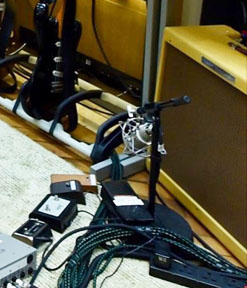
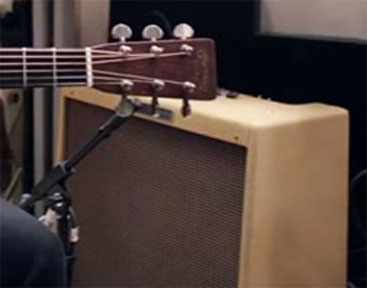
Gilmour's Fender Bandmaster in the live room. This looks very clean. It may be a 2013 reissue
I’ve got an old Fender Twin that’s pretty trusty and I’ve got a Hiwatt combo that, I guess, is 50 watts. I use my Yamaha rotating speaker cabinet quite often, mixed in with the other sounds… - David Gilmour - Guitarist - October 2015
Gilmour's 1958 Fender Tweed Twin-Amp and Alessando Redbone Special and speaker cab in the live room
Gilmour's Pete Cornish modified Alembic F2-B used as the pre amp for his Yamaha RA-200 rotary speaker cabinet
Gilmour's Hiwatt SA-212 and Magnatone 260 amps in the live room
Gilmour's Hiwatt SA-212 settings. It was fitted with Fane Crescendos for the TER sessions.
Gilmour's amp switcher with labels for his various amps and a Zoom 9030 multi effects
prcessor that David has been using to make demos since 1991.
Gilmour's Medina live room amp selector switcher and effect pedals
(left photo) Gibson 335(?), Gibson Gold Top Les Paul with P90s and Bigsby, blonde/white Tele, Black Strat, fretless Black Strat, Gibson lap Steel,
black baritone Tele with white binding and Bigsby. (right photo) Black Strat, Red EMG Strat (?), Gretch Duo Jet, Gretsch White Falcon.
The wide variety of guitars in Gilmour's Medina studio in 2014 and 2015. The orange guitar is a very rare 1957 Gretsch 6121 solid body Chet Atkins model with a B3 Bigsby and DeArmond single coil pickups (Dynasonics)
This Medina Photo is from March 2017, but much of the same gear from 2015 is still in the studio. Several of these guitars were auctioned for charity in 2019.
(photo by Tristan banks)
This Medina pedalboard effects as of September 2017
Top Row - Demeter Compulator, Effectrode PC-2A compressor, Origin Effects Cali 76-TC compressor, EXH LBP 2ube Stereo tube preamp,
Tube Driver (911), EHX Ram's Head Big Muff, EHX Triangle Big Muff, Seymour Duncan Twin Tube Blue (above Big Muff)
Middle Row - Colorsound Power Boost, Cornish Volume Pedal (connected to Power Boost to bring volume to unity), Tube Driver (BKB/Chandler),
Source Audio EQ, MXR Phase 90, Lehle parallel Mixer (to fix Electric Mistress volume drop), Electro-Harmonix Electric Mistress,
Seymour Duncan Shape Shifter Tap Tremolo
Bottom Row - Providence Chrono Delay, Dawner Prince Electronics Boonar (Echorec style delay), Free The Tone Flight Time delay,
Free The Tone Ambi Space reverb
Kit’s Secret Guitar, Gear, and Music Page
Guitar stuff, gear stuff, soundclips, videos, Gilmour/Pink Floyd stuff, photos and other goodies.
Copyright Kit Rae.
VISIT MY SWORDS, KNIVES and FANTASY ART WEBSITE www.kitrae.net

